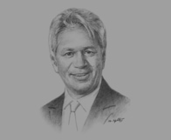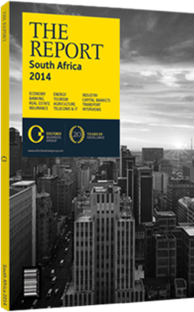OBG talks to Nazir Alli, CEO, South African National Roads Agency Limited (SANRAL)

Interview: Nazir Alli
Is South Africa’s land transport network capable of absorbing increased freight movement?
NAZIR ALLI: South Africa’s road network is well equipped to meet the rising volume of freight and passenger movement. However, the development of rail capacity will assist in providing a much-needed balance for such transportation going forward.
The national road network has grown over the past few years, from 16,000 km of road in 2013 to more than 21,000 km in 2014. This development is the result of advanced planning to meet future volumes, while taking the state of the country’s rail network into consideration. However, we are now seeing the expansion of rail capacity as new rolling stock and engines come online in 2014. This is a welcome development, as it will prompt a shift of some freight off road and on to rail, lessening the road burden and providing a balance. There has been quite a bit of traffic that should not be on the roads, such as hazardous goods, that should move back onto rail. The use of roads to transport commodities has, for example, led to a rise in maintenance costs. To be clear, it’s not that our national road network is deteriorating, it’s just that we have to spend more on maintenance. Moving forward, rail transport will assist us in ensuring the longevity of our roads.
That said, our secondary road network could be improved. We have the 10th-largest road network in the world, according to the World Economic Forum, and the 18th-largest paved road network. However, our secondary roads face challenges, and their development requires funding and skilled human capital. Nonetheless, as long as we observe transport trends, cooperate with the national rail operator and determine adequate funding mechanisms, our transport infrastructure will continue to be of a high standard.
What steps are being taken to enhance e-toll compliance and reduce collection costs?
ALLI: The system is working very well. Since e-tolls came into effect on December 3, 2013 the number of registrations has steadily increased. Collection only becomes an issue for those who are not registered. The obligation to pay is incurred immediately once a car passes the gantry and falls under the SANRAL Act No. 7 of 1998. Unregistered users pay an alternative tariff that is three times more than the standard registered rate, in order to recover the cost of such collections.
The cost of transport is tax deductible and our tariffs are inclusive of a 14% value-added tax, with corporates receiving rebates. For example, if a company’s marginal tax rate is 20%, then they receive 34% back. Alternatively, a marginal increase in fuel prices to fund the roads would lead to a much larger overall cost, which is why the Road Freight Association prefers tolling. Taxis are exempt from e-tolls altogether to avoid additional costs to the lower income segments of society that frequently use commuter taxis to travel to work.
Any controversy surrounding e-tolling stems from a lack of awareness. There has been a loss of revenue for almost three years since the road development was completed in 2011, so it will take longer to repay the debt. However, we have successfully raised money in the capital markets, and we believe the user-pay model works.
How have concessionaire appointments on a build, operate and transfer (BOT) basis improved the financing and operations of projects?
ALLI: Public-private partnerships (PPPs) are a viable model for financing infrastructure developments, but they do not yet have enough political and social acceptance in South Africa. Aside from still being used in the energy sector, PPPs have come to a grinding halt. Hopefully this will change with the implementation of the National Development Plan, which itself discusses PPPs and tariff charges. Concessionaire appointments on a BOT basis have been successful. They are beneficial in terms of funding, as they free up capital that can be used elsewhere. They also improve our ability to supply a piece of infrastructure much earlier than we otherwise could if financing came from fiscal transfers.
You have reached the limit of premium articles you can view for free.
Choose from the options below to purchase print or digital editions of our Reports. You can also purchase a website subscription giving you unlimited access to all of our Reports online for 12 months.
If you have already purchased this Report or have a website subscription, please login to continue.

